Pierre, S. Dakota, is a long way from everywhere. But it is in the center of South Dakota, which is why it won out over several other cities when the location of the capital for the new State of South Dakota was selected in 1889, the year the state was admitted to the Union.
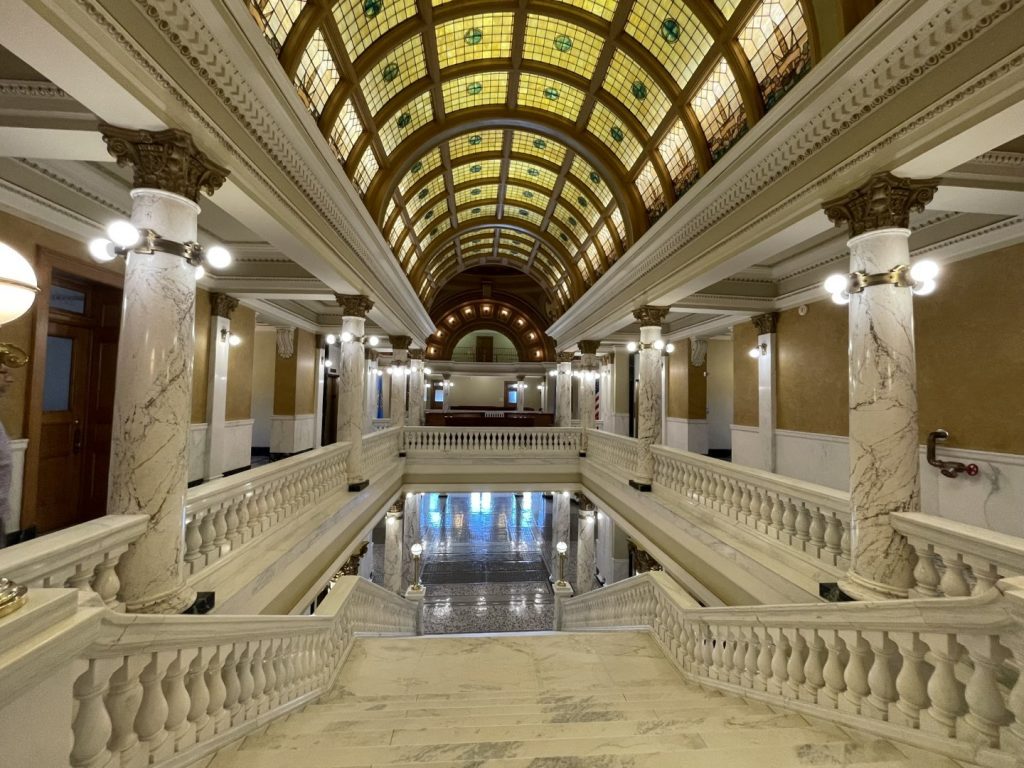
Though in the center of the state, nothing about the capitol city was considered important enough to warrant routing an Interstate Highway to it when the national roadway system was developed in the 1950s and 60s, one of just four state capitals not served by an Interstate.
With a population around 15,000, Pierre is today the second smallest state capitol city in the U.S., with only Montpelier, Vermont, smaller. It is South Dakota’s 9th most populous city.
This all meant that we had to drive considerably off the beaten path in order to visit our adopted home state’s capitol as part of our plan to visit all the State Capitols in the U.S.
The building was constructed between 1905 and 1910 at a cost of around $1 million. Ever parsimonious, the state purchased the plans for the building from the Minneapolis architect who designed the Montana State Capitol, in effect ordering the same building but smaller!
But the State of South Dakota wasn’t going in for all that fancy marble and intricate details in its scaled-down version–those Montanans might have money to burn, but South Dakotans are all about keeping it real. But fake, in the sense that instead of carved or cast moldings, or imported granite columns, they would rely on trompe l’oeil painting to replicate the look of carved or cast moldings and hollow columns made from marble dust and other materials to look just like weight-bearing marble Corinthian columns!
The ceiling of the rotunda is painted to resemble lots of architectural detail that isn’t really there, giving the impression of a small state trying a bit too hard to be big and important.
Fun fact about the clock behind the speaker’s dais in the Legislative chambers: when Governor Bill Janklow spoke to the combined assemblies here, he had the clock covered by a sheet to remind the representatives that doing the business of the people wasn’t something they should be clocking in and out of!
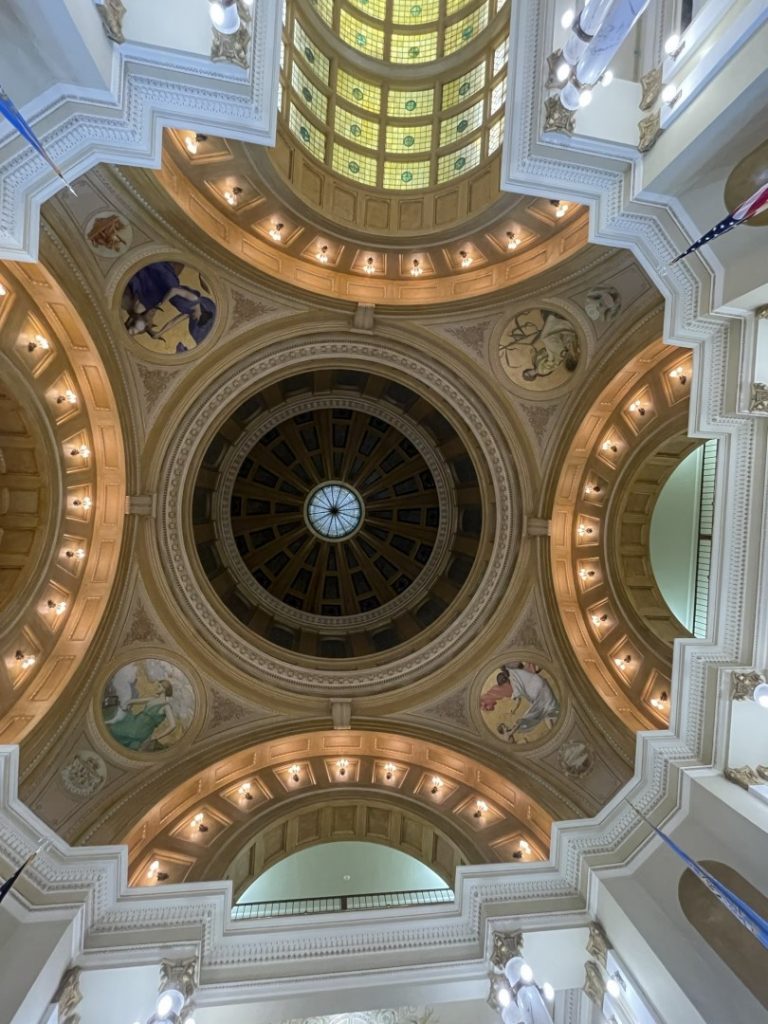
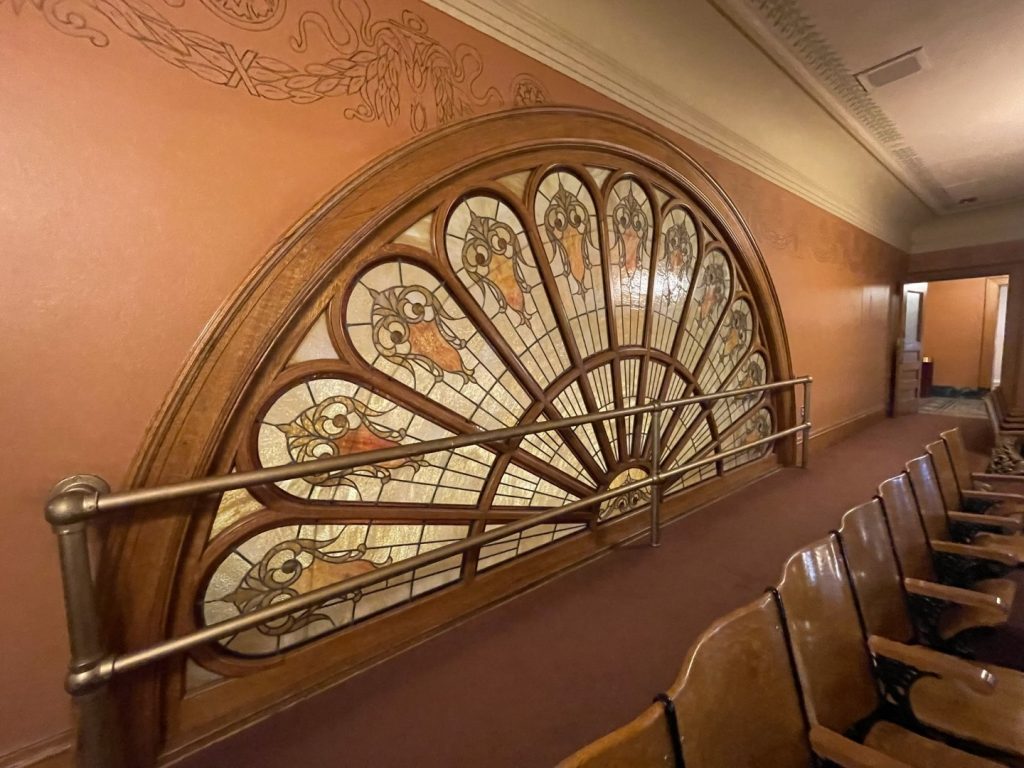
We received a private tour from one of the capitol employees, and in less than an hour we saw all of the capitol that was open to the public.
We also were able to sneak a peak in to the Supreme Court room which was restored in 1998 but has not been open to the public after 2001. This courtroom is still used today, uncommon in most other state capitols.
The Senate and Legislative chambers are rather austere but do convey a sense of purpose. The leaded stained glass ceilings were lovely but remained well within the defined constraints of the building’s design theme.
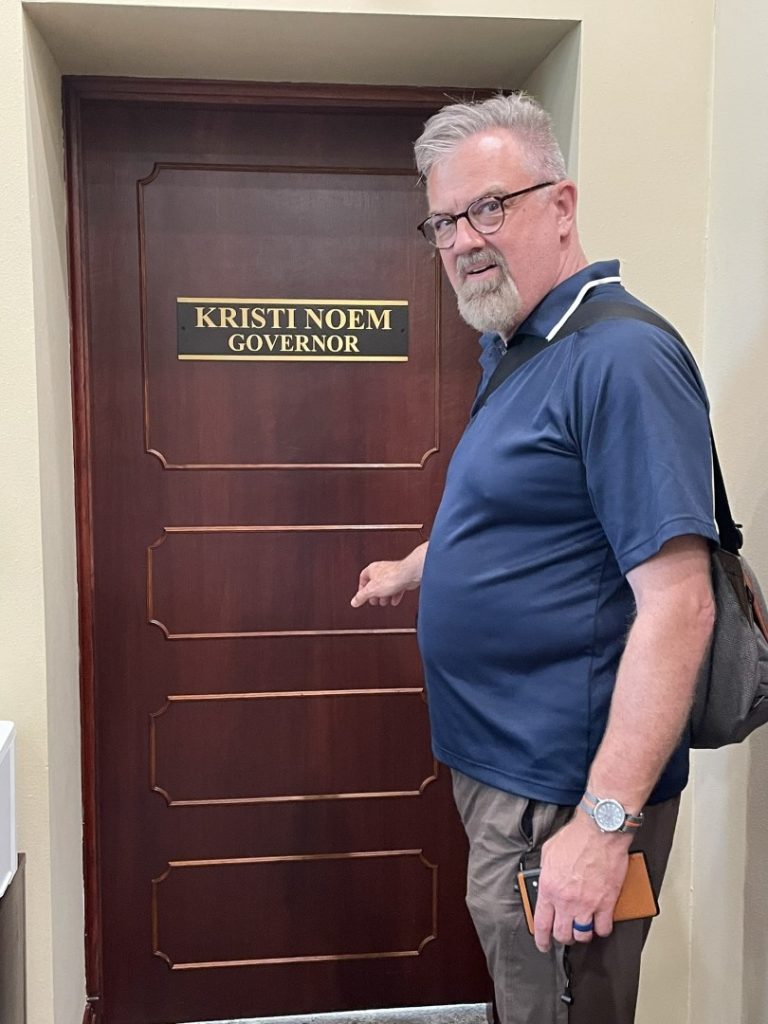
The lobby features a First Lady Gown Collection, which recently had to be updated to remove the reference to “Lady” after the election of Kristi Noem.
Her husband in the tux he wore to her inauguration is represented in the case.
The Governor’s offices are in the building as well, and we were able step inside (though the Governor was off tending to the recent floods in the state or speaking at conservative PAC events across the country, I forget which).
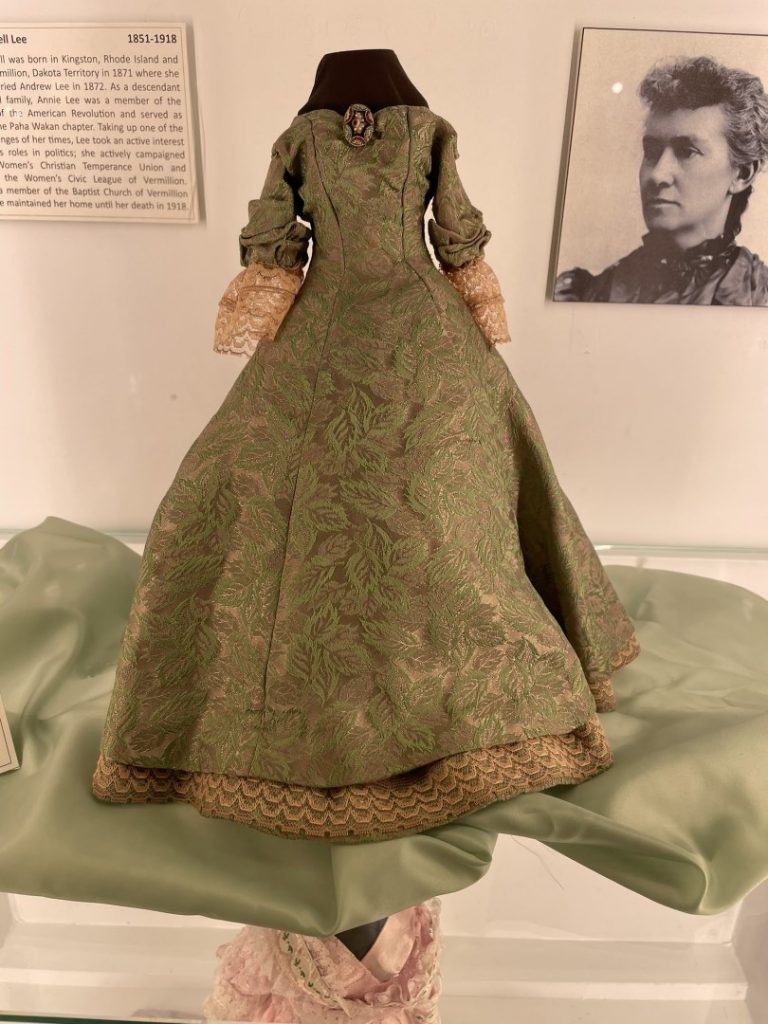
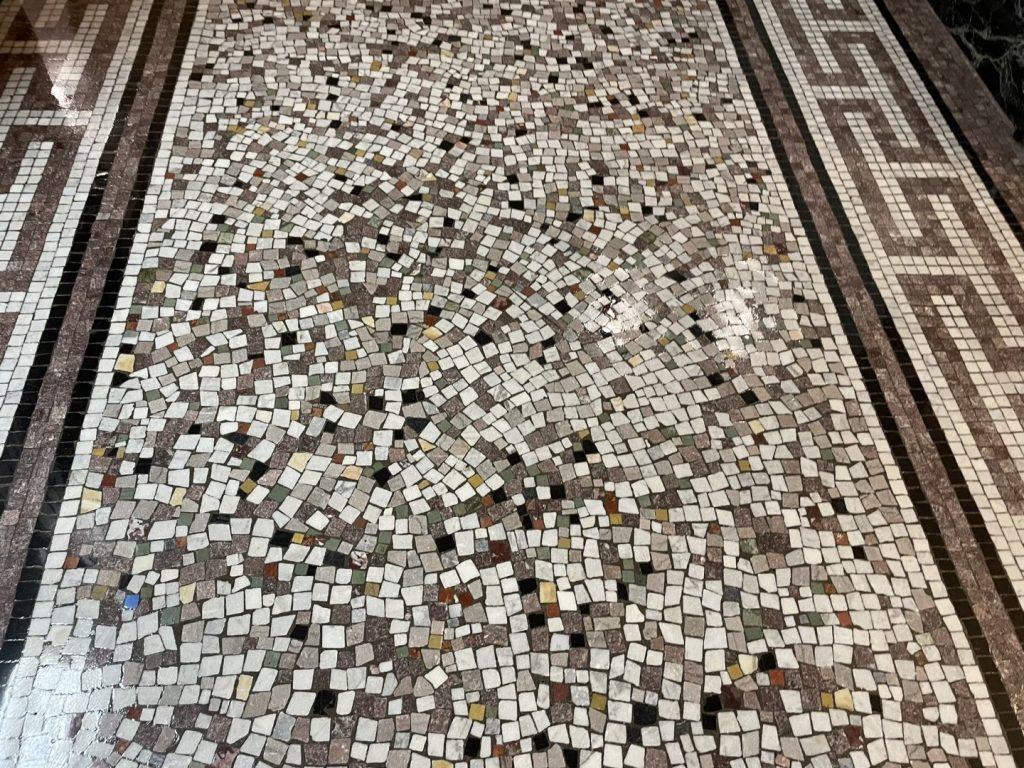
The terrazo floors were created using a lovely earth tone palette. Each of the 66 Italian tilers were given a small blue tile that they were allowed to place anywhere in the capitol. It makes for a fun scavenger hunt to try to find them, but many are in private areas or could be covered by furniture or other floor coverings, so 11 blue tiles are currently “lost.”
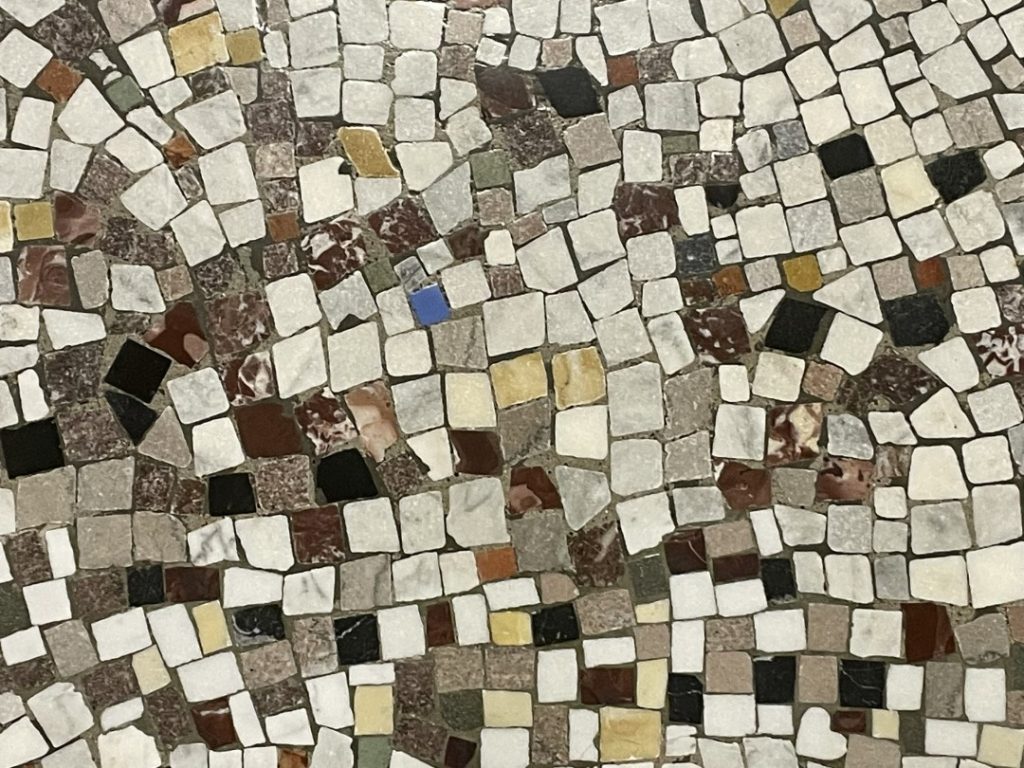
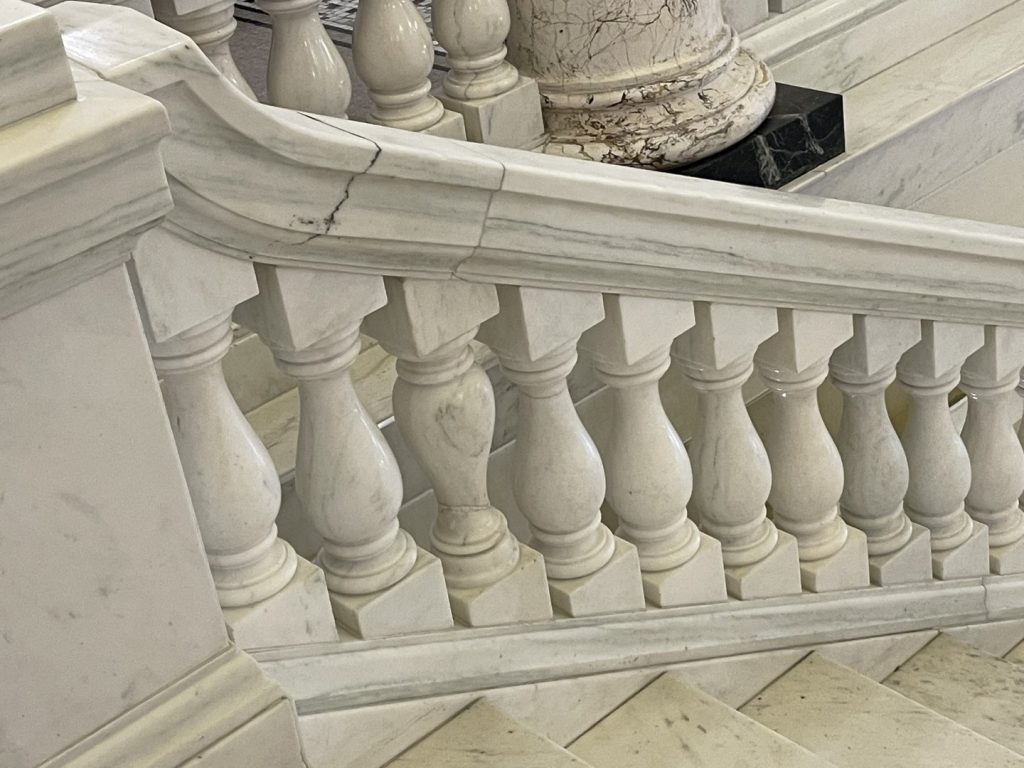
In a practice of the times when the building was constructed, one of the staircase balustrades was installed upside down as a reminder of humankind’s imperfections, and that only “God” is perfect.
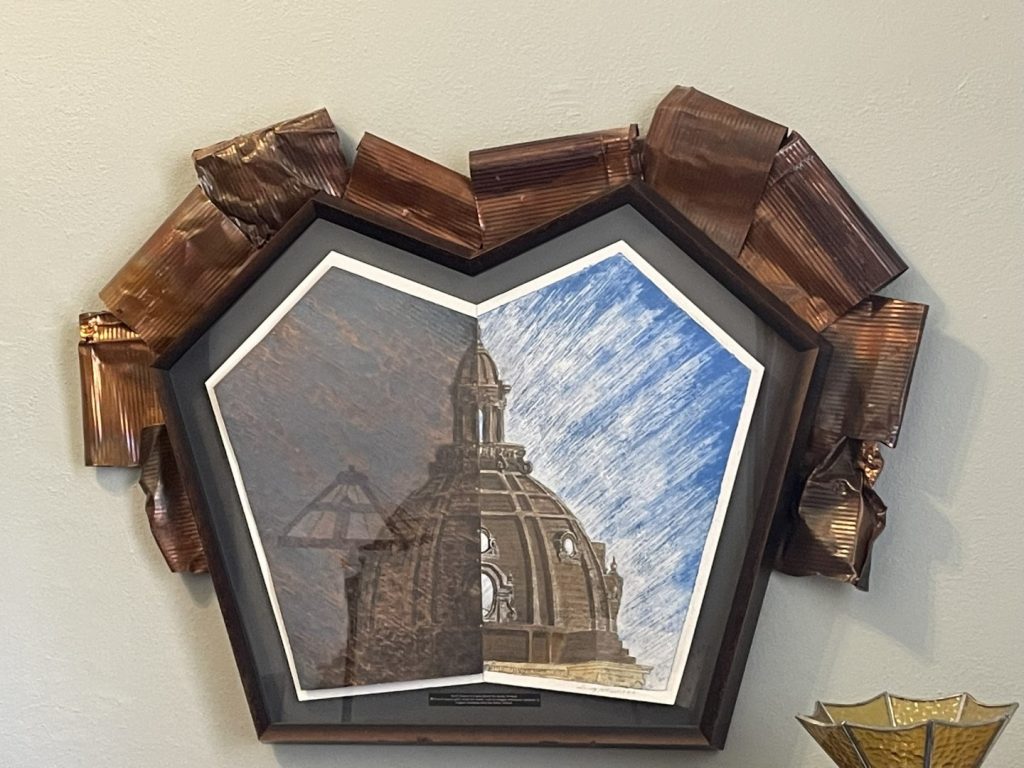
Many of the murals and artwork in the building represent native Americans, usually in one of three tropes: the “noble Savage” to be admired for their courage and fortitude; the bloodthirsty fighters, the inevitable losers when facing the superior white settlers; or the pure native squaw, regal in her beauty and apparently non-judgmental of her fate. Other works ensure that the impressive bison, a beast so beloved that it was nearly hunted to extinction, will at least be remembered in taxidermied effigies or in painted representations. In time, perhaps these “historical” perspectives may be re-evaluated.
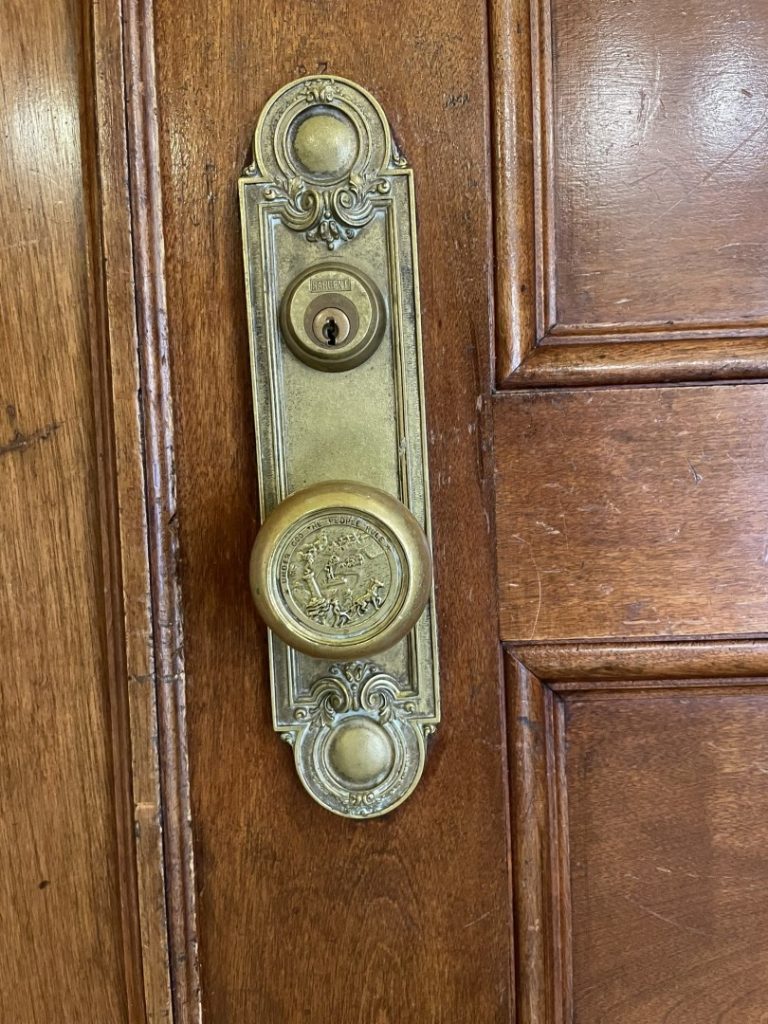
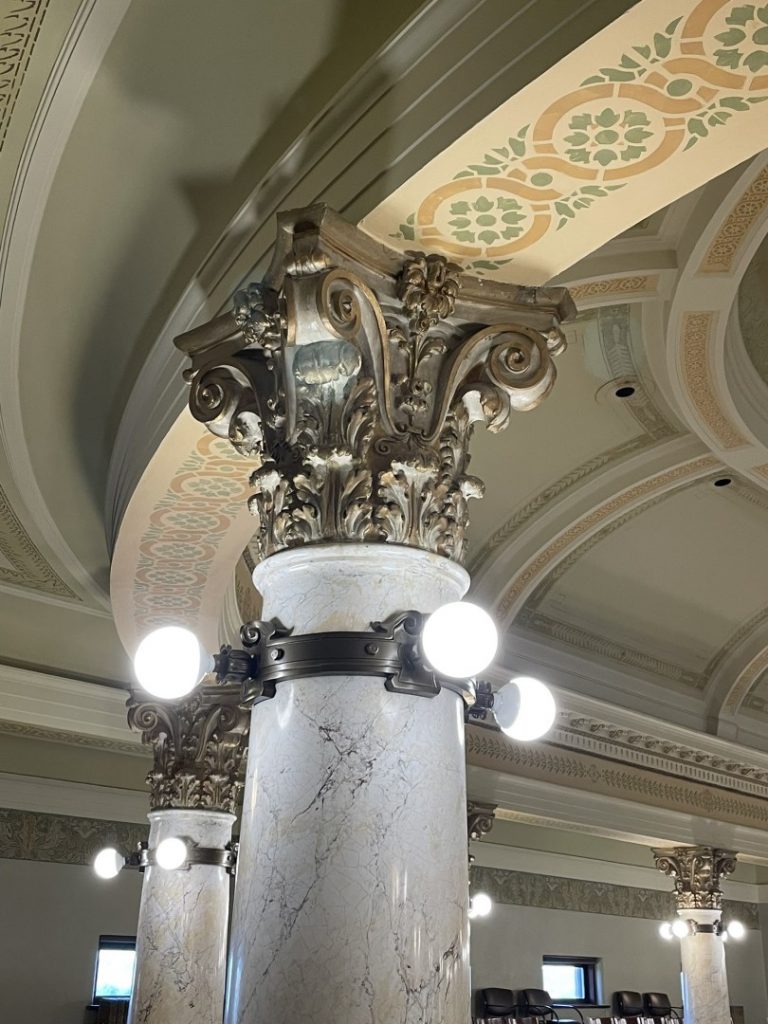
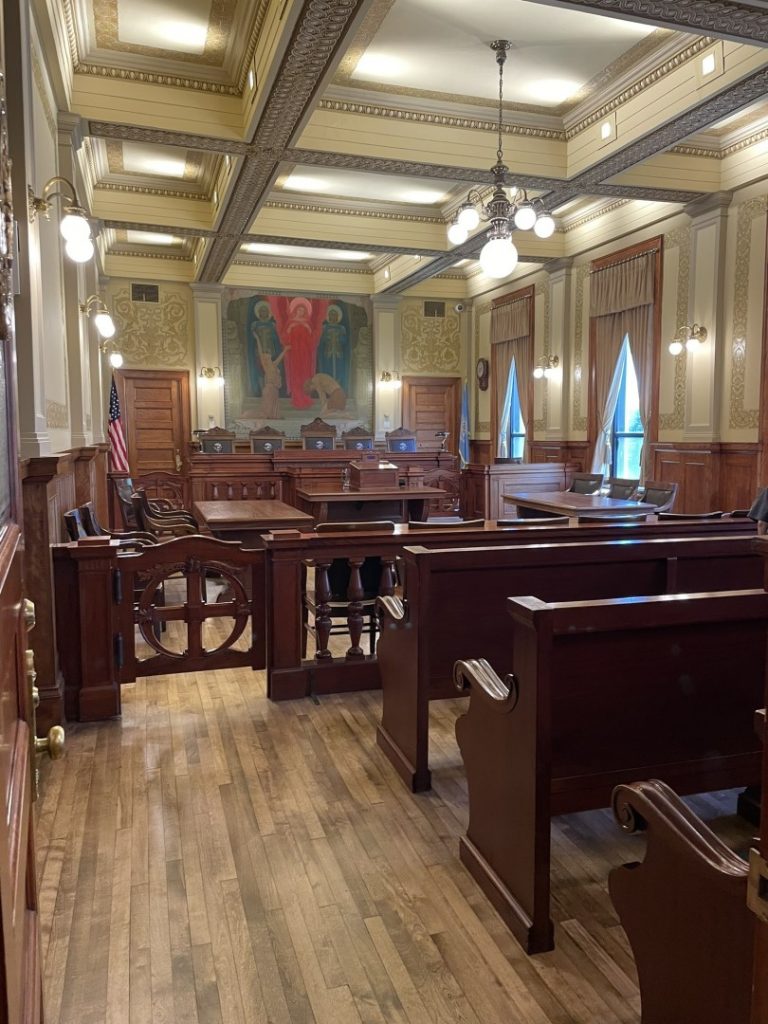





One thought on “South Dakota State Capitol”